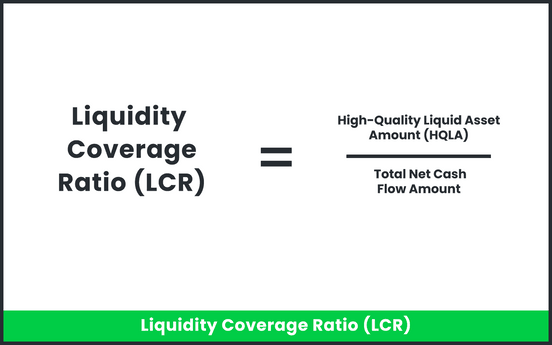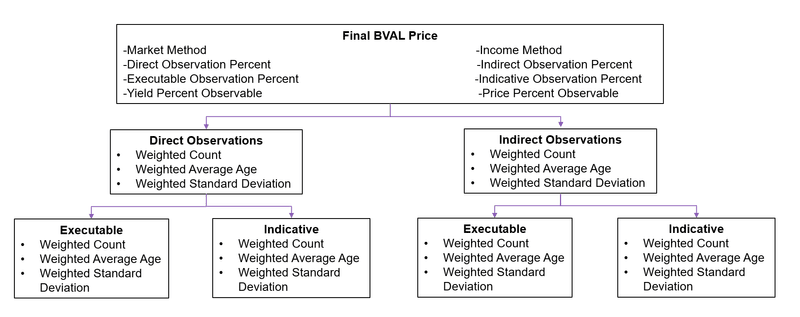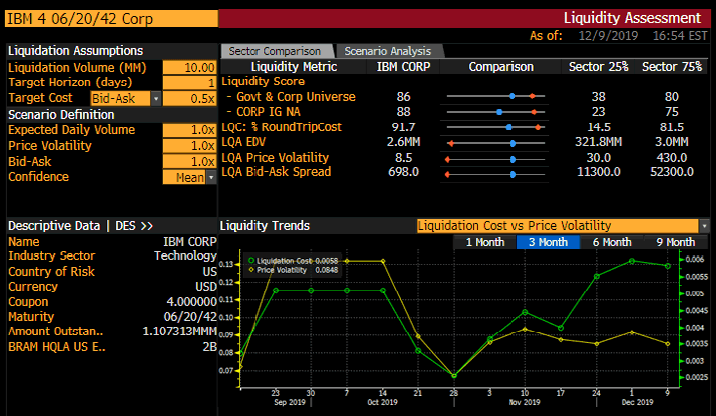Market volatility, bank capital & the need for robust liquidity metrics
This article was written by Scott Coulter, Global Product Manager, Enterprise Accounting & Regulatory Products and Zane Van Dusen, Global Head of Risk & Investment Analytics Products at Bloomberg.
The collapse of Silicon Valley Bank and rapid deterioration of other US and global banks have called into question long-standing banking regulations and norms. These events have brought bank liquidity, solvency, and capital adequacy to the forefront of regulators’ minds again. Price volatility, rising interest rates, and turmoil in the banking sector have been a stark reminder of the importance of liquidity and regulation for global banks.
Longstanding bank capital regulations developed off the back of the credit crisis are now being revisited and rethought. The digitalization of the banking world and the role of social media in financial markets have changed the landscape of banking and regulators want to ensure that regulations are equipped to handle these new dynamics.
Underpinning so many of the existing regulations (and likely those to come or be revisited in the coming years) is liquidity. Now, more than ever, banks need to understand the liquidity cost, horizon and dynamics of their portfolio, both for regulatory compliance and for survival.
What is “Liquid & Readily Marketable”?
One of the key elements of the regulatory reforms that followed the credit crisis was the development of the Liquidity Coverage Ratio (LCR). This ratio measures a bank’s liquidity by calculating the ratio of High Quality Liquid Assets (HQLA) to Net Cash Flow (total expected cash outflows, minus total expected cash inflows, in the specified stress scenario for the subsequent 30 calendar days). Global rules generally require an LCR of at least 100%, effectively ensuring that banks have enough HQLA to meet these 30-day stressed net outflow requirements.

HQLA is, by its very nature, supposed to be ‘liquid’, and not just in periods of market equilibrium, but also in periods of the most unforeseen stress and market dislocation. Basel Rules specifically require that instruments be “Liquid & Readily Marketable” (LRM) to qualify as High Quality Liquid Assets (HQLA) for liquidity coverage and capital adequacy purposes. The purpose is clear, but the practice is much more challenging as there is no shared definition or criteria for LRM across jurisdictions.
Now, more than ever, it is important to be critical of the liquidity and marketability of a bank’s HQLA and large US banks have signaled that increased scrutiny of the “Liquid & Readily Marketable” component was on the Fed’s 2023 testing agenda, even before the recent market events.
A recent article in Risk.net highlighted the tendency of major banks to classify their HQLA at Held-to-Maturity, allowing them to be measured at cost in their financial statement. The article highlighted the mismatch between the accounting treatment and the regulatory purpose of this liquidity buffer, a mismatch that obscures transparency into the value and liquidity of this essential capital buffer.
How to determine if a High Quality Liquid Asset is Liquid & Readily Marketable?
With no agreed-upon guidance globally, regional interpretations and implementations vary. The Federal Reserve Bank defines a Liquid and Readily Marketable security as “a security that is traded in an active secondary market with: (1) more than two committed market makers; (2) a large number of non-market maker participants on both the buying and selling sides of transactions; (3) timely and observable market prices; and (4) a high trading volume.”
Demonstrating the criteria above can be quite challenging and requires robust, granular market depth and liquidity information.
First and foremost, it requires detailed information on actual observed quotes and trades, both on specific HQLA securities and on peer or comparable securities. In particular, demonstrating the “two committed market makers” means that this data will need to be sourced from a large number of brokers. The “timely” and “large number” requirements further require information on the age and number of quotes and trades. Best practice is to capture and leverage data on the count, age, type, executability and standard deviation/spread of observed quotes and trade, at a minimum.
However, observed quote and trade data does not always tell the whole story. Liquidity is position-specific and past data is not always a good indicator of future liquidity. As a result, forward-looking liquidity models are often used to prospectively estimate liquidity cost and horizon based on position-specific data.
Beyond the Basel Rules: Liquidity and regulation
The regulatory value of robust liquidity data goes well beyond just the LCR & HQLA rules. Market depth and liquidity data has increasingly become an input in various global regulations and rules. Some regulations include:
Prudent Valuation: PruVal rules require calculating adjustments (AVAs) between the fair value and “prudent valuation”. These adjustments are based on the level of “valuation uncertainty” inherent in an organization’s fair values. The lower the valuation uncertainty, the lower the adjustment and therefore the lower the capital requirements and the cost to the organization. Robust liquidity data, especially standard deviations, can provide evidence of low valuation uncertainty, reducing PruVal obligations and the cost of compliance.
Fair Value Leveling – IFRS 13 & ASC 820: Global accounting standards require companies to include a “leveling” table in the notes to the financial statements, which classifies all investments presented at fair value as Level 1, 2 or 3, based on the significance of unobservable inputs. Quote and trade data can be used to classify instruments based on these rules.
Bloomberg liquidity tools
In order to meet the challenge of demonstrating the Liquid & Readily Marketable criterion and the various other liquidity-driven regulatory challenges, Bloomberg provides extensive liquidity data and analytics.
Market depth and transparency fields
BVAL, Bloomberg’s evaluated pricing service processes more than 1 billion market observations daily to evaluate more than 2.7 million fixed income instruments. From this massive universe of data, Bloomberg produces granular consolidated data on the count, age, type, and standard deviation of trades and broker quotes (both executable and indicative). This in-depth quote and trade data can be used to provide strong empirical evidence of liquidity of instruments and positions, often in conjuncture with LQA outputs.

Liquidity Assessment
Bloomberg’s award-winning solution for Liquidity Assessment (LQA) leverages Bloomberg’s robust financial data sets to provide daily data-driven estimates of liquidation cost, horizon, and volume. LQA accounts for the fact that liquidity is dynamic and can vary significantly depending on the size of the position a firm is trying to liquidate, as well as prevailing market conditions. This enables firms to identify when seemingly liquid assets could illiquid. Using advanced financial modelling, LQA can estimate liquidity for a broad range of securities, even those with little-to-no recent trading activity, under both normal and stressed market conditions.
LQA is especially helpful with the assessment of liquidity when:
- There are very few trades or quotes
- The position is subject to company/position assessment
- Stressing the position or portfolio is important
- Limits/haircuts for cost, horizon or volume exist

The road forward for banking regulation
The past few months have brought unprecedented turmoil and challenges to the banking industry. At the Senate Hearing on the recent banking failure, many potential changes to the banking regulation were discussed, but nothing concrete is yet known. One change that seems increasingly likely is a lowering of the in-scope threshold for LCR and HQLA rules from total assets of $250bn to $100bn (or lower), a move that would effectively double the number of banks in scope for these rules and, in turn, the LRM criterion.
It’s difficult to know what the regulatory implications will be, but undoubtedly there will be changes, and almost certainly, liquidity will be a focal point. Robust liquidity data will be imperative to managing a shifting regulatory landscape in the years to come.